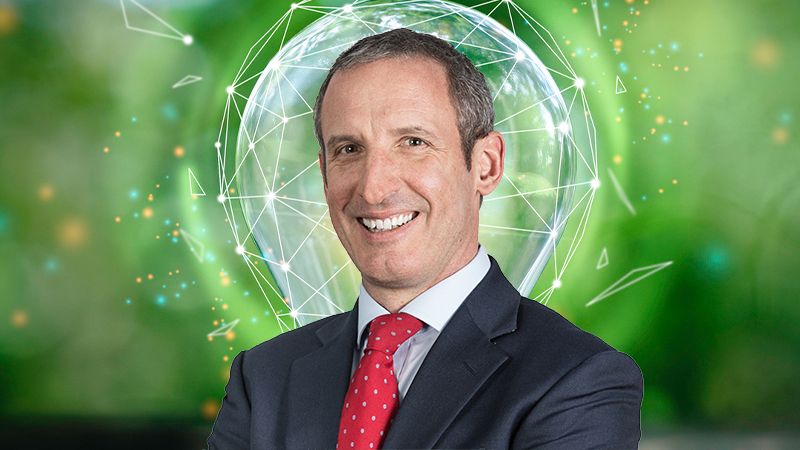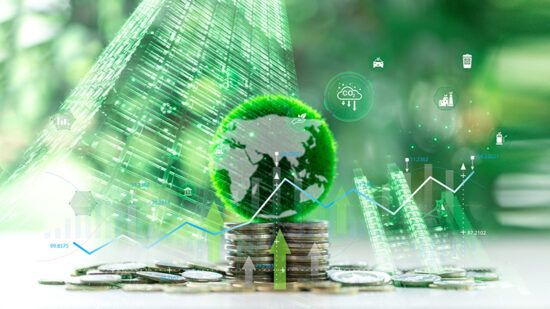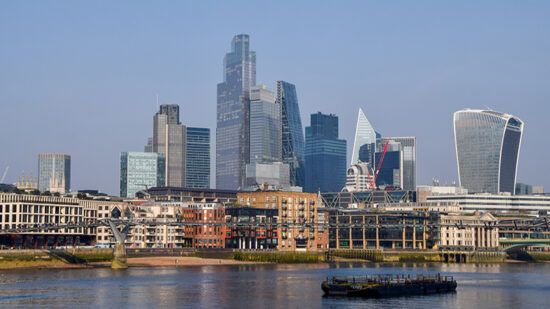It hasn’t been an easy time to be an environmentally focused fund manager. Well-documented problems in a number of the renewable energy sectors have hit share prices, with rising interest rates and inflation escalating build-costs. The sector has also had to manage some indigestion from the wall of capital that hit during the pandemic, raising share prices and valuations. However, for those who believe the transition to a more sustainable economy is irreversible, it may be a good moment to re-examine the sector.
Impax Asset Management has been in the sustainability business for more than 25 years, with Jon Forster joining Ian Simm and Bruce Jenkyn-Jones in 2000. The team has seen the sector evolve from a niche, volatile market to a more global, mature investment opportunity. They have evolved with it, and now run £39bn in a range of different strategies.
Impax Environmental Markets, the UK’s largest environmental investment trust, was launched in 2002, and now has £1.2bn of total assets, according to AIC data. The broad investment proposition hasn’t changed since launch, says Forster: “The thesis is that companies that are finding solutions to environmental challenges are going to grow at a faster rate compared with the global economy. And if we can understand that sector well and pick the right stocks, we can translate that growth into long-term outperformance of global equities.”
However, the opportunity set has changed meaningfully. When the group first started, the environmental universe was limited to energy, water and waste. “It was quite niche but has become far more diverse over the years,” he says. The fund now covers clean and efficient transportation, sustainable food and agriculture, ‘smart environment’, which includes digital infrastructure and artificial intelligence (AI). ‘Waste’ has become ‘the circular economy’, which incorporates recycling and waste management, and is now a much broader sector.
Forster adds: “The fund is offering investors pure exposure to the growth of environmental markets. It’s small and mid-cap biased, and it has a growth orientation, but at a reasonable price.”
See also: Impax to acquire £1.6bn European fixed income assets
However, it has been a tougher period for environmentally focused assets, with wind and solar assets in particular in some difficulty. At the same time, small and mid-caps have significantly underperformed, and growth as a style has also struggled. There has been some row-back on the energy transition, particularly in the US. Targets have been pushed out as some major asset owners in the US have railed against the inclusion of ESG principles from fund managers.
This is unwelcome, but does not disrupt the long-term picture, says Forster. He told Portfolio Adviser, PA Future’s flagship brand, the recent run of weakness has brought valuations down to attractive levels and presents a real opportunity for investors who believe in the long-term transition story.
Forster is in no doubt about the durability of environmental change and is encouraged by changing consumer preferences. “If you think of the big upheavals in the global economy, consumer preference has been a key part of that,” he explains. “This has been a driver for environmental change – from the VW ‘Dieselgate’ scandal to the war on plastics. All of these changes were catalysed by the consumer, with governments looking to align themselves.”
Policy and regulation remain another key driver of change. “There is still a ‘policy ratchet’. The policies get tighter over time, energy policy standards are building, water treatment quality standards are improving. That is a potent driver of growth. Have we seen some paring back? Yes. But does it change the destination? We don’t think so.”
Striving for balance
The Impax team has tried to mitigate the impact of the volatility in some key renewable energy sectors during the past 18 months. Forster says: “We strongly believe the way to make money in these markets is to be diversified and to find different sectors that are not correlated with each other.
“This means having a balance of cyclical and more defensive opportunities and have room to manoeuvre. Wind and solar are volatile sectors, but we manage our exposure up and down depending on the outlook in those sectors.”
Policy also impacts investment parameters. It can help create a solid investment case for technologies that need subsidies or may just force a change of behaviour by setting standards. Foster believes it has been instrumental in helping the dramatic progress made so far. The cost of renewables has come down and there is less reliance on subsidy.
The Impax Environmental Markets fund invests in pure-play environmental companies, meaning at least 50% of a firm’s revenue is tagged to one of the key environmental sectors. The average is far higher, at 80%. This provides a universe of 1,500 companies, with $7trn (£5.5trn) of market capitalisation.
If a stock is deemed interesting, it goes into fundamental analysis. The output is a 10-step discovery process, covering the market, competitive advantage, business model and strategy, management and risks. Also up for consideration is ESG quality, which covers good governance as a core requirement, plus material environmental and social risks.
“All companies have a responsibility to be thinking about climate change and how they fit into those risks,” says Forster. Human capital management and DEI [diversity, equity and inclusion] are critical success factors. Finally, we look at whether a company has been involved in controversies that might damage its brand.”
The result is a 55-65 stock portfolio spread across a range of environmental sectors. This analysis sets the parameters for Impax’s engagement with companies. It does a lot of company level engagement with its holdings, partly at their request and partly at Impax’s. Forster finds many high-quality businesses that are confused about the right areas to focus on. “We try to help them identify what’s important. It creates a different relationship with the management team if you’re helping them improve.”
Unlocking performance
The fund had a strong run from 2019-21, driven by broad growth across environmental markets. There was a rapid escalation of support for net zero, which led to a re-rating across environmental sectors. Foster reduced Impax’s exposure to renewables and energy efficiency, which were ‘hot’ but quite hard to avoid. Valuations were expensive at a time when inflation took off and interest rates started to rise rapidly.
“Performance in 2023 was characterised by a rotation out of growth and into value. There was also a lot of economic uncertainty, which meant small and mid-caps – where we’re focused – substantially underperformed. Size and style were against us.” The fund has seen a 4.1% annualised fall in its share price over the past three years and trades at an 11% discount to net asset value. It has started to recover tentatively, but it is still early days.
Forster is optimistic. “There are always periods of out- and under-performance, but it has always recovered.
“Previous periods of weakness have led to a rapid rebound. That’s what we’re looking for today. A few sectors are having temporary challenges, but the base investment case is still in tact.”
He gives the example of the renewable power and utilities sectors, which were struggling with inflationary pressures and rising interest rates. While power prices are still low, inflation and interest rates are falling, and companies are saying they can make healthy returns on projects.
There is also growing merger and acquisition activity. US private equity group Kohlberg Kravis Roberts has announced plans to take over German renewable energy platform and independent power producer Encavis, for instance.
In solar, there have been issues with regulatory change in North America, plus weaker economics from residential installations and also excess inventory in the US and Europe. However, Forster expects these issues to resolve in the coming quarters. Similarly, share prices in the wind sector have stabilised.
Forster adds: “In the meantime, there are areas of real strength. AI is driving the rapid uptake of software and technology into industrial value chains. The companies that are providing the hardware and industrial software, using this generative AI, form around 10% of the portfolio exposure and had strong performance last year, as did our sectors exposed to construction. Energy efficiency and water infrastructure companies have also been robust.”
The portfolio looks very different to some of its energy transition or environmental peers. The top 10 holdings include materials group Aalberts, water treatment company Pentair, software specialist PTC, nutrients supplier DSM Firmenich and waste management provider Stericycle.
Forster says: “Macro has been difficult, but in a soft landing or mild recession we think the market will look to the next cycle. Market and central banks are on the same page in terms of when expecting cuts and how many. We want the macro outlook to become more visible, so people can look beyond interest rates. It should unlock performance in small and mid-caps. The next 10 years will be very important in terms of what we do and where that leaves us on environmental goals.
“The long-term growth story is very much in tact and we’re just at a low ebb in that story.”
This article first appeared in the July/August issue of Portfolio Adviser magazine








